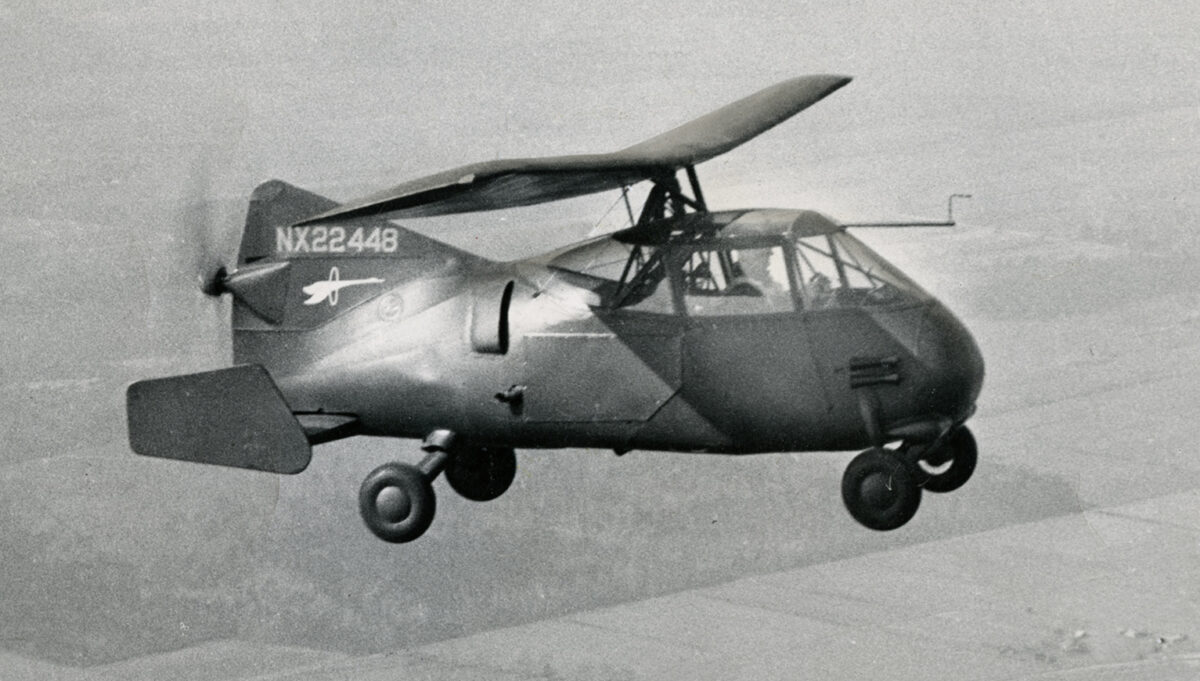Convair 103 Skycar IV
While William Bushnell Stout is best known for his contributions toward the Ford Tri-Motor airliner of the 1920s, he was also involved in the automobile industry. At a Detroit show in the spring of 1931, the Stout Metal Airplane Division of the Ford Motor Company unveiled the prototype for a series of aircraft aimed at everyday motorists through Stout’s self-stated formula to “simplicate and add more lightness.” Dubbed the Skycar, it was a small two-seat monoplane made of steel tubing with corrugated skin panels and an aft-mounted pusher engine with a latticework arrangement to the tail surfaces. Lateral control was originally by means of movable wingtips, but in the course of several modifications they were replaced by more conventional ailerons on the wing trailing edges. Stout envisioned production versions selling for a moderate $2,000. The Skycar I was never accepted for production, but Stout used it as his own private plane for several years. It has survived and can now be seen at the National Air and Space Museum’s Udvar-Hazy Center in Chantilly, Va.
The Skycar underwent several changes in configuration before Stout moved on to a higher-powered version, the Skycar II, in 1941. Built with the help of General Motors engineer Fred Fisher, this version was made of stainless steel, had twin vertical tail surfaces on twin booms and featured four wheels with an eye toward possible roadability. The U.S. Army Air Forces evaluated its potential as a light transport aircraft designated the XC-65, but it was destroyed in a hangar fire in 1942. Undaunted, Stout built a similar-looking but higher-powered successor, the Skycar III, in 1943. It was also tested by the USAAF as the XC-107, but it was ultimately rejected.
If Skycars II and III looked like airplanes turning into cars, Stout’s final effort, the Skycar IV, looked more like the opposite—a car sprouting airplane parts. What set it apart was the use of a single wing designed by George Spratt that was articulated to tilt in any direction to control pitch, roll and yaw—essentially taking the place of all other control surfaces. This version dispensed with struts or booms, the tail consisting of a triangular vertical stabilizer and a horizontal stabilizer with two smaller vertical stabilizers added on the tips. Evaluated for possible production by Consolidated Vultee in 1944 as the Convair 103, it was also known as the Spratt-Stout Model 8.
The Convair 103 prototype, which bore the civil registration NX22448, was powered by a 90-hp Franklin 4AG and later a 125-hp Lycoming O-290C engine, driving a tail-mounted pusher propeller via a shaft. Wingspan was 36 feet and length 21 feet 7 inches. It had a projected range of 300 miles and a ceiling of 13,400 feet. The Convair 103 reportedly flew well and an unconfirmed report has it being fitted with a 180-hp Lycoming O-435 engine in 1945. But approval for production never materialized and as with its one-off predecessors, the Skycar IV ended up in good company on the sizeable scrap heap of flying automobiles.

